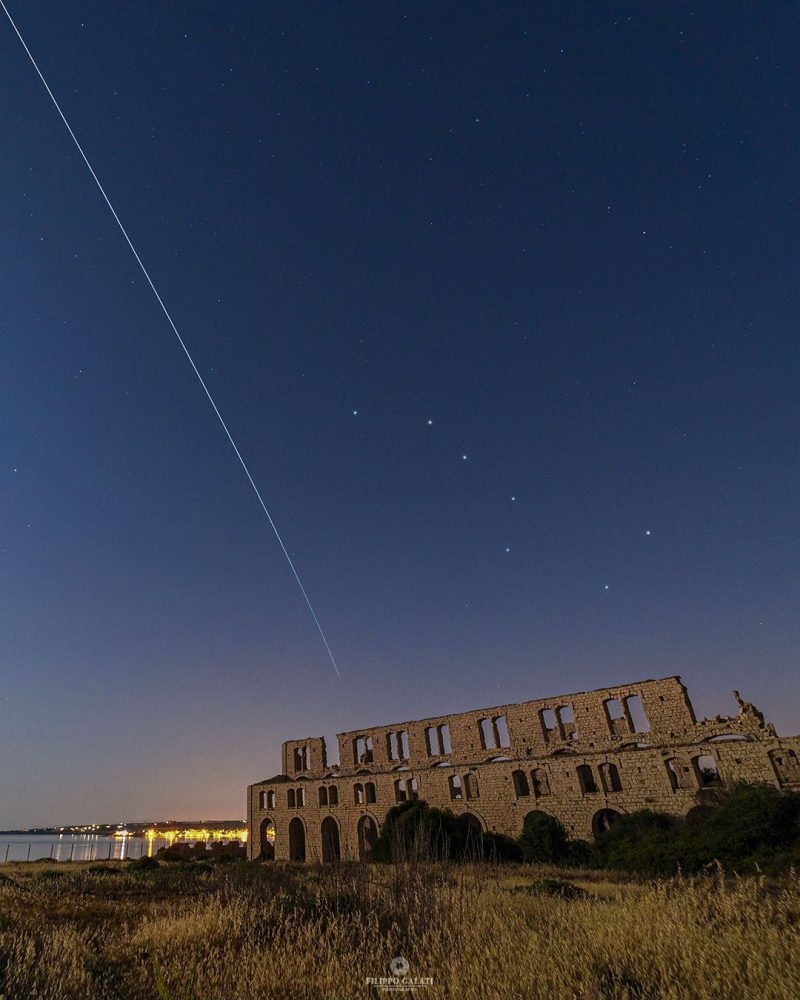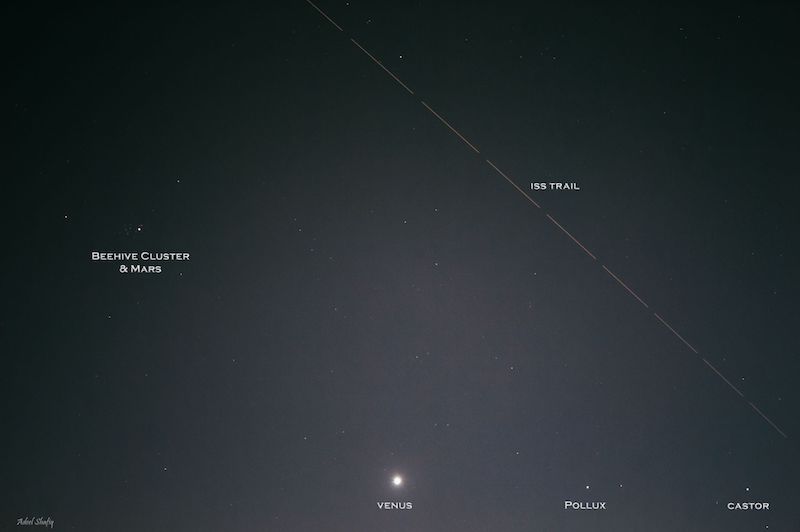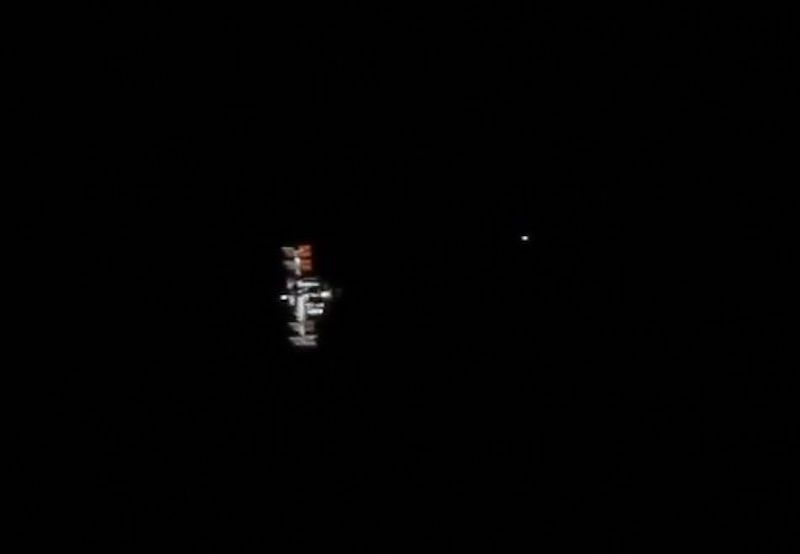
A bird? A plane? The International Space Station!
The International Space Station (ISS) has been orbiting our planet since 1998. From most locations on Earth, assuming you have clear night skies, you can see the ISS for yourself. It looks like a bright star moving quickly from horizon to horizon to us on Earth.
But how do you know when to see the ISS pass overhead from your location?
NASA has a great tool to help. Sign up to the Spot the Station program and you’ll receive alerts to let you know when the ISS will be visible from your location, wherever you are in the world. Plus, there’s a map-based feature to track when to look for the station as it flies over you.
Typically, alerts are sent out a few times each month when the station’s orbit is near your location. You’ll get notices only when the ISS will be clearly visible from your location for at least a couple of minutes.
One note: those who live north of 51.6 degrees north latitude (for example, in Alaska) may want to visit the Spot the Station website directly to see upcoming sighting opportunities. This is because notifications in this region will be fairly rare.
How to spot the International Space Station
Spot the Station will tell you which direction to look for the ISS in your night sky. If you’re not sure about your directions, just note where the sun sets. You know it sets generally westward. So from there, you can easily find the direction where the station will appear (for example, in the southwest or northwest).
Via NASA’s service, the height at which the station will appear in your sky is given in degrees. And remember, 90 degrees is directly over your head. So any number less than 90 degrees will mean the station will appear somewhere between the horizon and the overhead mark.
Want a way to measure degrees on the sky’s dome? Make a fist, and stretch out your arm: your fist at arm’s length is equal to about 10 degrees. Then, just use the appropriate number of fist-lengths to find the location marker. For example, four fist-lengths from the horizon would be equal to about 40 degrees.
And don’t worry, the station is bright! It’s hard to miss if you’re looking in the correct direction.

Two decades of human occupation
The first module of the ISS was launched into space in 1998. The initial construction of the station took about two years to complete. Human occupation of the station began on November 2, 2000. And since that time, the ISS has been continuously occupied.
The ISS serves as both an orbiting laboratory and a port for international spacecraft. It orbits at approximately 220 miles (350 km) above the Earth, and travels at an average speed of 17,227 miles (27,724 km) per hour. It makes approximately 16 orbits around Earth every day.
The primary partnering countries involved in operating the ISS include the United States, Canada, Japan, several European countries and Russia. China has produced its own space station, Tiangong, with the first module launched in 2021. The last of the three initial modules launched in November 2022.
Retirement of the International Space Station
The ISS can’t continue forever, and plans are already in place for its retirement. The station will be de-orbited and crashed into the Pacific as early as 2031. So use this guide and make the most of the ISS while it’s still in our skies!
Enjoying EarthSky? Sign up for our free daily newsletter today!

Bottom line: Learn how to spot the International Space Station from your location.











